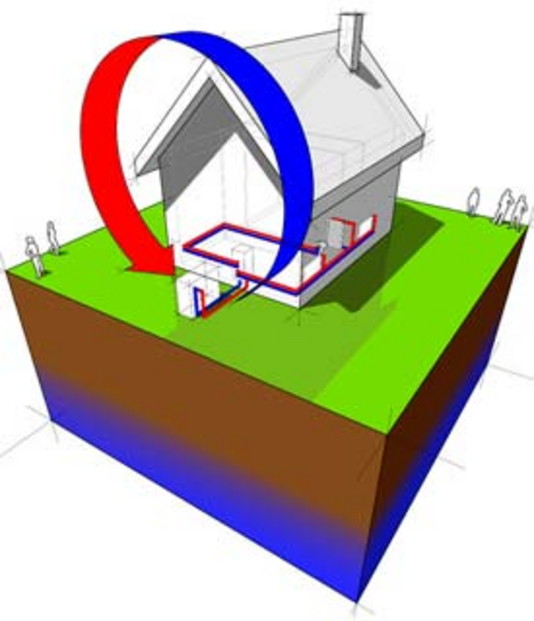If you are looking for a way to reduce your fossil fuel use while saving money, an air-source heat pump (ASHP) might be a valid option. While this technology has long been popular in warmer southern climates, the colder winter temperatures in the north make it more challenging to extract heat from the freezing outdoor air. Despite this, technological advancements over the past few years have made ASHPs an efficient source of heating in colder climates as well.
ASHPs move heat into a building by circulating a liquid refrigerant between an indoor handling unit and an outdoor radiator. The heat pump heats the liquid by first pressurizing it, pumping it inside from outdoors, and then circulating it through the home’s heating system. The liquid is then depressurized and cooled, after which it travels to the outdoor radiator where the process begins again. ASHPs can also be used to cool buildings through a similar process in which the warm inside air is cooled by the refrigerant, which has been depressurized. The liquid is then sent outside and pressurized, as well as being cooled by the ambient outdoor temperature. The Department of Energy provides a more detailed explanation here of the many different types of ASHPs for those of you who are interested in the more technical aspects of the process.
Energy and Cost Savings
When installed properly, ASHPs can produce between one and a half and three times more heat energy for a home than the electrical energy they use. The Northeast Energy Efficiency Partnerships found that by replacing entire units in the Northeast and Mid-Atlantic regions with air-source heat pumps, the annual savings are approximately 3,000 kWh or $459 when compared to electric resistance heaters and 6,200 kWh or $948 compared to oil systems. When they are used to displace oil, meaning that the oil system remains but is used less frequently, the annual savings is around 3,000kWh or $300. These prices of course depend on the current costs of electricity and oil. The federal government offers a tax credit for ASHPs and a number of states offer rebate programs.
The Right Heat Pump for Your Home
There are a number of options when it comes to choosing the right ASHP for your home, but the most commonly used in retrofits are ductless, mini-split heat pumps because they do not require a ducted heating system. According to the Department of Energy, this type of heat pump also provides a way to heat room additions without extending or installing distribution ductwork. The main advantage to using this type is that one outdoor unit can be connected to as many as four indoor units (meaning it can be used in four different zones or rooms). The typical installed cost ranges from $3,000 to $5,000.
It is also important to choose the right model – one that matches your climate. The traditional way of determining this is by using the EnergyGuide label, which denotes the model’s heating and cooling efficiency. Heating efficiency is determined through the heating season performance factor (HSPF) and cooling efficiency is determined with the seasonal energy efficiency ratio (SEER). Because the HSPF does not include low temperature testing below 17 degrees Fahrenheit, Northeast Energy Efficiency Partnerships developed the cold-climate ASHP specification, which requires manufacturers to report down to 5 degrees Fahrenheit. You should consult these ratings when choosing your ASHP.
Credit: Mariel Marchand




























